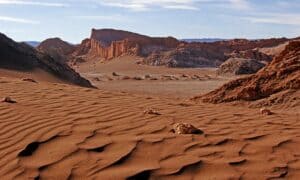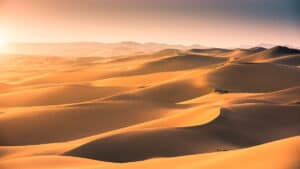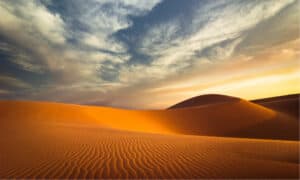The Sahara Desert is the third largest desert in the world and the largest hot desert. It’s located in North Africa, and it reaches across ten countries. It is nearly as large as the United States and is known for its extreme temperatures and sandy dunes. So, exactly how deep is the sand in the Sahara?
How Deep Is the Sand in the Sahara Desert?
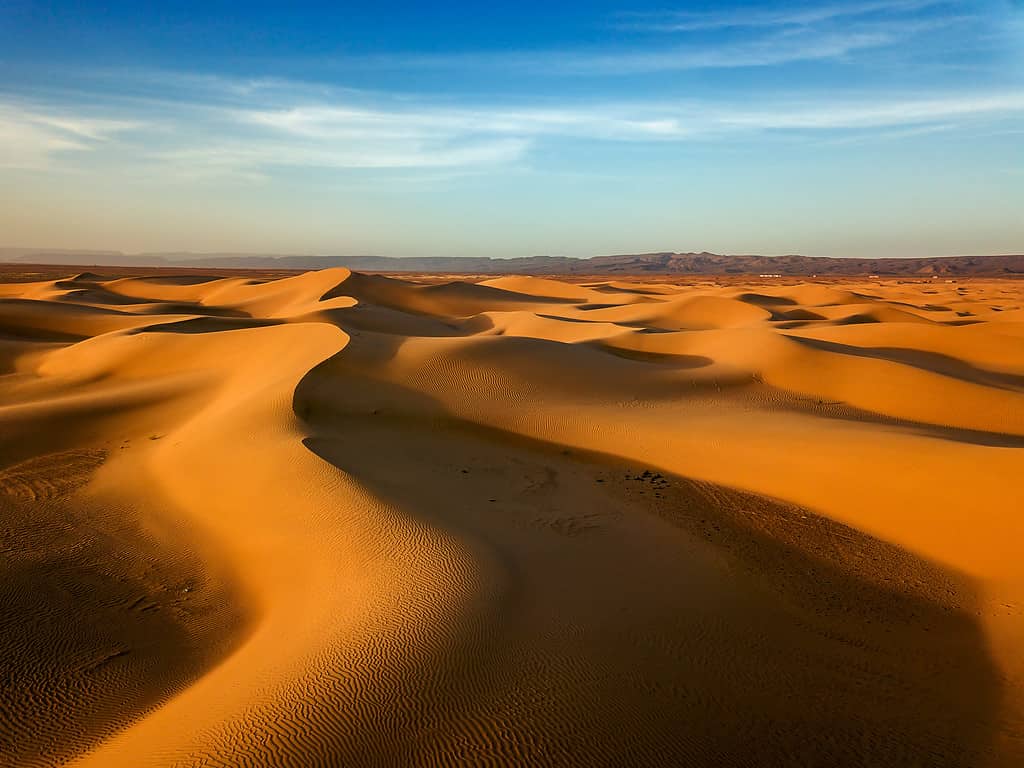
How deep is the sand in the Sahara Desert?
©Mik122/iStock via Getty Images
Due to wind and its many dunes, the sand of the Sahara Desert varies in depth. The average depth of this sand is 16 feet (5 meters). Sometimes, the wind pushes these dunes into larger features, which becomes stable. These giant dunes are known as ergs. The tallest erg in the Sahara is Erg Chebbi, which reaches a height of about 490 feet or 150 meters.
What Is a Desert?
A desert is an area of land that gets less than 10 inches, or 25 centimeters, of precipitation in a year. More moisture may evaporate from the desert than falls in a given year. The Sahara is a subtropical desert close to the equator, where hot, moist air rises and drifts away to fall as heavy rain. That cool, dry air moves toward the tropics and sinks to the ground, where it is heated. This air holds very little moisture; consequently, not much rain falls in these regions. Desert makes up nearly a third of the Earth’s surface.
Where Is the Sahara Desert?
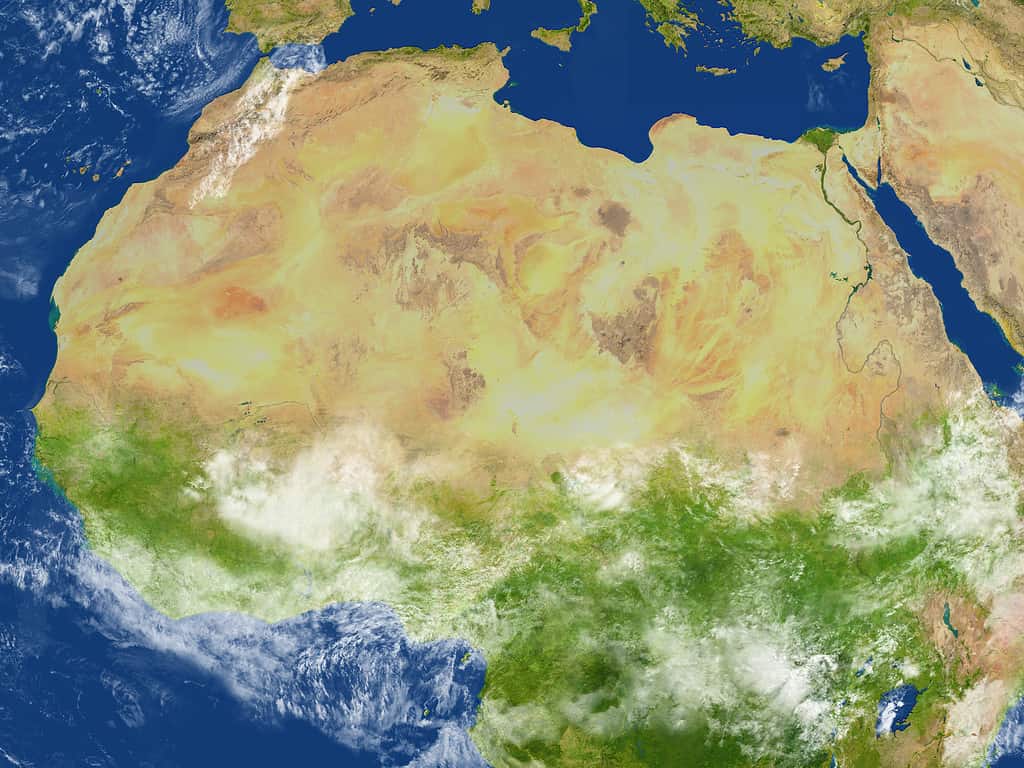
The Sahara Desert stretches across nearly the entirety of northern
Africa
.
©Harvepino/iStock via Getty Images
The Sahara Desert covers a wide swath of northern Africa. It measures nearly 3,000 miles from the Red Sea in the east to the Atlantic Ocean in the west. The Sahara’s 3.6 million acres cover about 31% of Africa’s continent. There are ten countries touched or covered by the Sahara Desert: Algeria, Chad, Egypt, Libya, Mali, Mauritania, Morocco, Niger, Sudan, and Tunisia.
How Was the Sahara Desert Formed?
One theory suggests that the Sahara Desert formed around 7 million years ago. Where the desert now sits, there was once a vast inland sea called the Tethys. Eventually, the African and the Eurasian tectonic plates moved into each other, enclosing part of the sea. Later, the Earth’s axis wobbled, affecting its proximity to the Sun. This subjected it to solar radiation levels about 7% higher than today’s. The dry air in that region began to evaporate the sea. It left behind sand deposits as it shrank into the Mediterranean.
How Are Sand Dunes Formed?
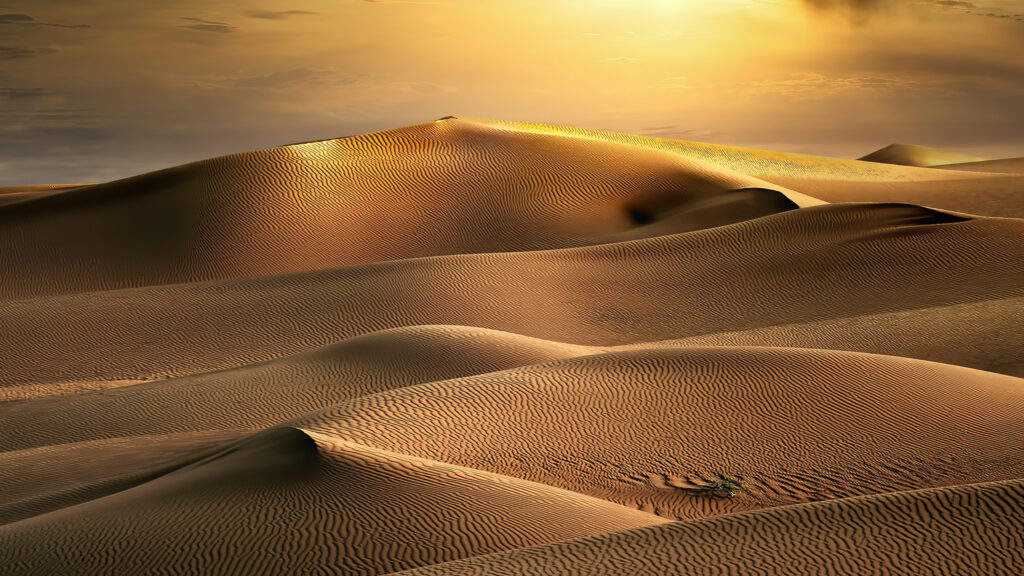
Sand dunes are formed by wind.
©iStock.com/AFZALKHAN M
The Sahara Desert is known for its massive dunes. These are formed when the wind deposits sand granules on top of each other. When a mound forms, more sand piles up on the windward side of the mound until it collapses. This happens when the angle, known as the angle of repose, is too great to support the weight. That angle can be anywhere from 30 to 34° depending on the size and roughness of the sand grains and the wind speed.
If the wind comes from multiple directions, dunes will form a line parallel with the prevailing wind. These are known as longitudinal dunes. When the wind blows in only one direction, with no opposing wind, the dunes will form crescent shapes with horns pointing downwind. These are known as barchan dunes. Dunes in the Sahara can be seen from space.
How Does Climate Change Impact the Sahara Desert?
The tropical latitudes that create subtropical deserts shift toward the poles at about 30 miles per decade. Collected rainfall data indicates that the Sahara has expanded nearly 10% since 1920. The authors of that study believe that 2/3 of this is due to natural climate change, while about a third of the change is related to human activity.
What Lives in the Sahara Desert?

Dromedary camels are among the wildlife found in the Sahara Desert.
©Slimoche/iStock via Getty Images
Despite the Sahara’s arid and unforgiving nature, many animals have made their homes there. This includes insects such as the deathstalker scorpion, Saharan silver ant, and the dung beetle. Strangely enough, this region even has a place for a snail, the desert snail.
Some large mammals, such as the Addax antelope, the dromedary camel, the Dorcas gazelle, and the Nubian wild ass, can find food and water sources in this arid region. Other mammals here include the jerboa, the rock hyrax, the desert hedgehog, the Libyan striped weasel, and the slender mongoose.
The presence of large and small mammals and other prey invites predators. The Northwest African cheetah, the African wild dog, the spotted hyena, and the sand cat control these animal populations.
Reptiles making a home here include the Saharan sand viper, the desert monitor, the desert crocodile, and the cobra. In spite of a lack of moisture, amphibians such as the African clawed frog and the skink live here.
Finally, birds such as black-faced firefinches, African silver bills, red-necked ostriches, and pale crag martins fill the skies.
Thank you for reading! Have some feedback for us? Contact the AZ Animals editorial team.





